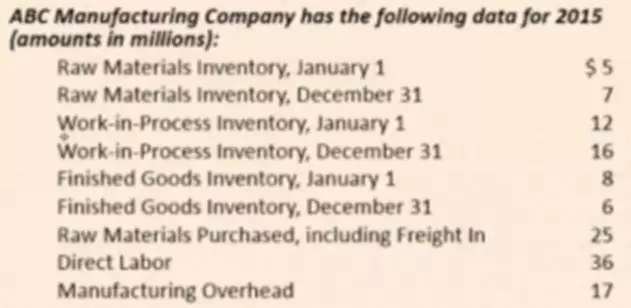
Company A might post a loss in the first quarter, and report a diluted share count of 100 million — but post a profit for the year, with a diluted share count more than twice as high. Forward EPS estimates are made by analysts or by the company itself. The forward EPS is calculated using projections for some period of time in the future (usually the coming four quarters). EPS is typically used by investors and analysts to gauge the financial strength of a company.
Calculating The Fair Value Of ASGN Incorporated (NYSE:ASGN) – Simply Wall St
Calculating The Fair Value Of ASGN Incorporated (NYSE:ASGN).
Posted: Mon, 05 Jun 2023 07:00:00 GMT [source]
In other words, a company has issued shares and then bought some of the shares back, leaving a reduced number of shares that is currently outstanding. The purpose of the repurchase can also be to eliminate the shareholder dilution that will occur from future employee stock option or equity grants. Sometimes, if a company considers its stock job cost sheet to be undervalued, it will institute a repurchase program, buying back shares of its own stock. Market capitalization is calculated by multiplying the company’s share price by its shares outstanding. Finally, outstanding shares are different than authorized shares, or the number of shares that a corporation is legally allowed to issue.
Premium Investing Services
This refers to how many total shares the company has purchased back from investors. More specifically, treasury shares are the portion of shares that a company keeps in its treasury. So far, we’ve focused on shares outstanding, whether basic or diluted, at a fixed point in time. In SEC filings, companies will report the total number of shares outstanding on a given day, but in their quarterly and annual figures they must also offer the weighted average shares outstanding.
Is There An Opportunity With Lear Corporation’s (NYSE:LEA) 36% Undervaluation? – Simply Wall St
Is There An Opportunity With Lear Corporation’s (NYSE:LEA) 36% Undervaluation?.
Posted: Sun, 18 Jun 2023 12:20:29 GMT [source]
It’s important to note that outstanding shares do not include treasury stock, which are shares that were once owned by investors that a corporation has repurchased. They also do not include preferred shares, which are stocks that do not carry shareholder voting rights, but do give their owners some ownership rights and pay a fixed dividend. But the concept of outstanding shares is a bit more complicated than it seems. The number of shares outstanding changes over time, sometimes dramatically, which can impact the calculation for a reporting period. At any given point, instruments like warrants and stock options must be accounted for as well. Typically, a stock par value serves as a minimum selling price during an initial public offering and has little significance afterward.
Outstanding Shares: The Bottom Line
When you buy stock in a company, you are buying an ownership stake, which is issued as a share of stock. Therefore, the total number of shares outstanding of Apple Inc. at the end of the year 2016 is 5,336.16 million. Therefore, the total number of shares outstanding of Walmart Inc. at the end of the year 2016 is 3,162 million.
- The number of shares of common stock outstanding is a metric that tells us how many shares of a company are currently owned by investors.
- If a company did a recent forward or reverse split, the information online might not be accurate.
- A company may authorize buying back some of its own shares in the market if they believe that the market is undervaluing them and there is enough cash on the balance sheet to do so.
- Then, add those terms together to get the weighted average number of outstanding shares.
- Preferred stocks are higher ranking than common stock, but also subordinate to bonds in terms of claim, or rights to their share of the company’s assets.
- The larger stock market is made up of multiple sectors you may want to invest in.
Similarly, companies may also have other stock, for example, preferred and treasury stock which may impact this figure. Therefore, it may be crucial for investors to calculate shares outstanding. This process involves various steps, depending on the company and its financial statements. In most circumstances, investors can use the following formula to calculate a company’s shares outstanding.
Weighted Average Shares Outstanding Formula
Stock splits are usually undertaken to bring the share price of a company within the buying range of retail investors; the increase in the number of outstanding shares also improves liquidity. Conversely, a company will generally embark on a reverse split or share consolidation to bring its share price into the minimum range necessary to satisfy exchange listing requirements. While the lower number of outstanding shares may hamper liquidity, it could also deter short sellers since it will be more difficult to borrow shares for short sales. Diluted earnings per share is derived by taking net income during the period and dividing by the average fully diluted shares outstanding in the period. The diluted shares are calculated by taking into account the effect of employee stock awards, options, convertible securities, etc.

A recent example of a reverse stock split is General Electric’s (GE) 1-for-8 reverse stock split during the summer of 2021. Generally speaking, stocks with smaller floats will experience more volatility than those with larger floats. Obviously, those option holders in theory could exercise their options to create new shares.
Shares Outstanding Formula
An additional metric used alongside shares outstanding is a company’s “float,” which refers to the shares available for investors to buy and sell on the open market. Shares outstanding is a financial number that represents all the shares of a company’s stock that shareholders, including investors and employees, currently own. The number of shares outstanding increases with the issue of new shares and stock split, while it decreases with share re-purchase and reverses split. When companies consider their stocks to be undervalued, they often initiate a share repurchase program, buying back some of their issued shares at a favorable price. The outstanding shares figure is useful to know for an investor that is contemplating buying shares in a company.

For a company with common and preferred stocks, the calculation will become complex. Investors can use the following formula to calculate its issued stock for the above equation. One method is for the investor to calculate a weighted average of the share price paid for the shares. The investor would multiply the number of shares acquired at each price by that price and then add those values together.
Should they do so, however, they would also contribute $50 million in cash to the corporate treasury. Authorized shares, meanwhile, are the maximum number of shares a company can issue, based on its corporate charter. The company reported $1.2 billion of net earnings, so its basic EPS is $2.40, and its diluted EPS is $2.35. The “Ending Shares Outstanding” represents the common share count on the first date of the quarter. These statements are available on companies’ investor relations pages or the SEC website. The information is also available on stock data websites like Stock Analysis.
- The information is also available on stock data websites like Stock Analysis.
- This measurement typically includes figures from the four quarters of the current fiscal year, some of which may have already elapsed, and some of which are yet to come.
- In other words, the balance sheet is a snapshot of what a company owns, what it owes, and the total amount that has been invested by shareholders.
- For example, the price-to-earnings (P/E) ratio calculates how much investors are paying for $1 of a company’s earnings by dividing the company’s share price by its EPS.
- These outstanding shares number includes diluting securities, for example, convertibles and warrants.

Deja una respuesta